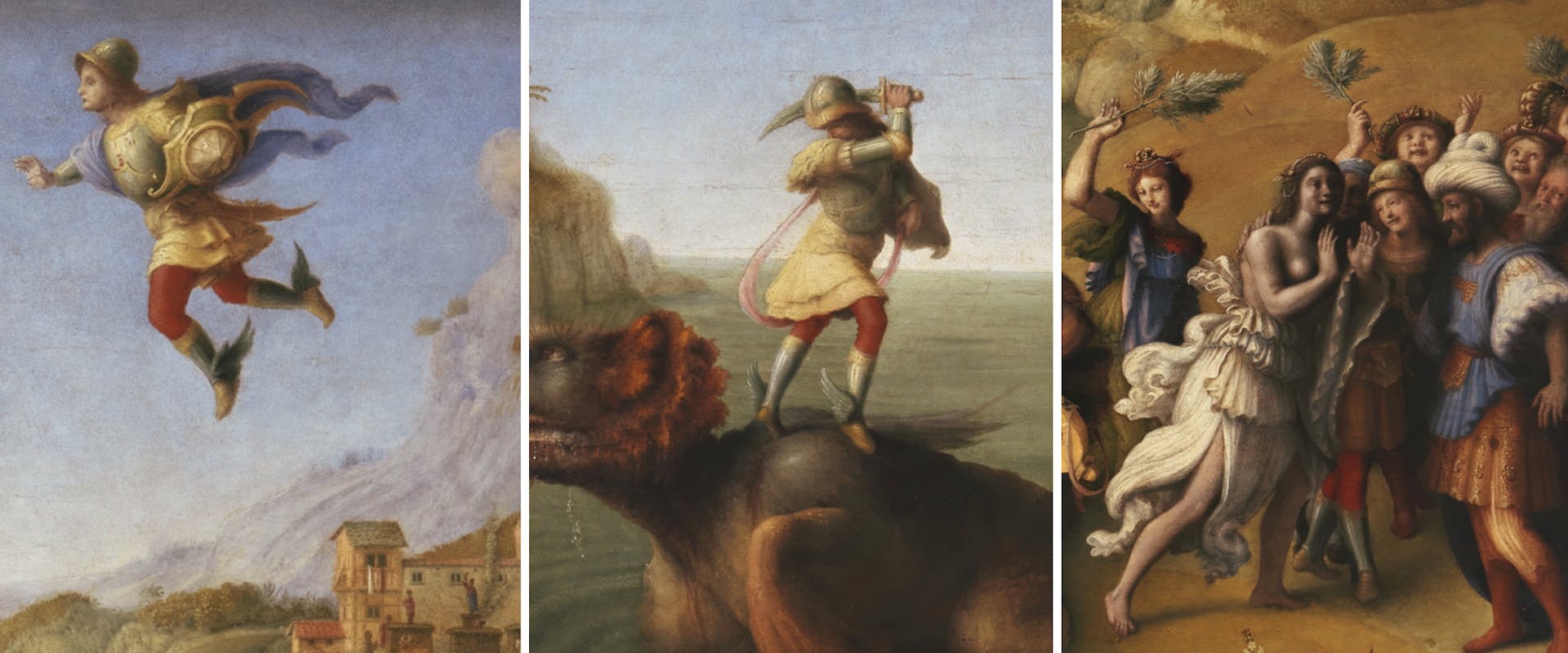The Scenic Virtuality of a Painting: "Perseus Freeing Andromeda" by Piero di Cosimo
This gorgeous painting by Piero di Cosimo (Florence, 1462 - 1522) was executed between 1510 and 1515c. Although reduced in size (1230x700 mm), it displays a surprising and microscopic attention to details which is worth watching through the use of digital devices: an experience that undoubtedly strikes the observer for the flawless accuracy of particulars almost invisible to the naked eye.
The painting is also remarkable for the captivating "scenic virtuality" of the episode narrated: the source is the myth of Perseus and Andromeda told by Latin poet Ovid, a master of style for every writer, playwright or artist of the Italian and European Renaissance. In that work of art which is Metamorphoses, Ovid has handed down to us a masterpiece of writing that in its versification, metre, structure and rhythm almost "mimetically" expresses the literal meaning of "metamorphosis", of transformation, of time that perpetually turns every form into another one in ceaseless movement: here, in Piero di Cosimo's painting, the same "scenic virtuality" of the Ovidian narration that imitates reality is exemplified through a syncronous and circular representation of the same episode, where the different moments of the story originally unfolded in a temporal sequence of events are all simultaneously depicted in a single painting; a means that perfectly renders that sense of everlasting transmutation of being characterizing the poem by Ovid.
Symbols, clues and allusions to the Medici family and Piero di Cosimo's contemporary culture complete the picture according to that typical process of reinterpretation and modernization of classical sources Humanistic and Renaissance thinking pivots on.
Curated by Patrizia Naldini
